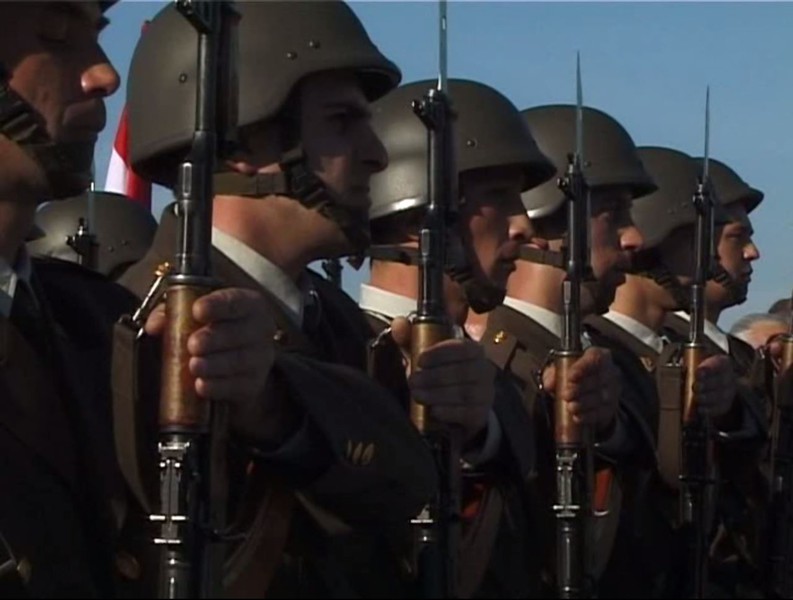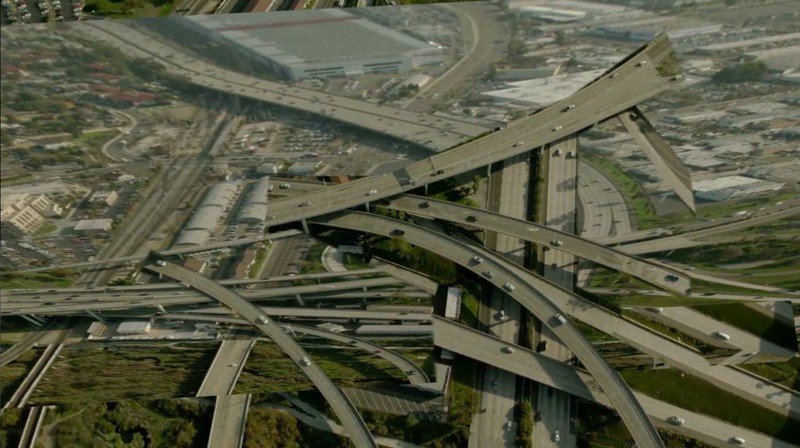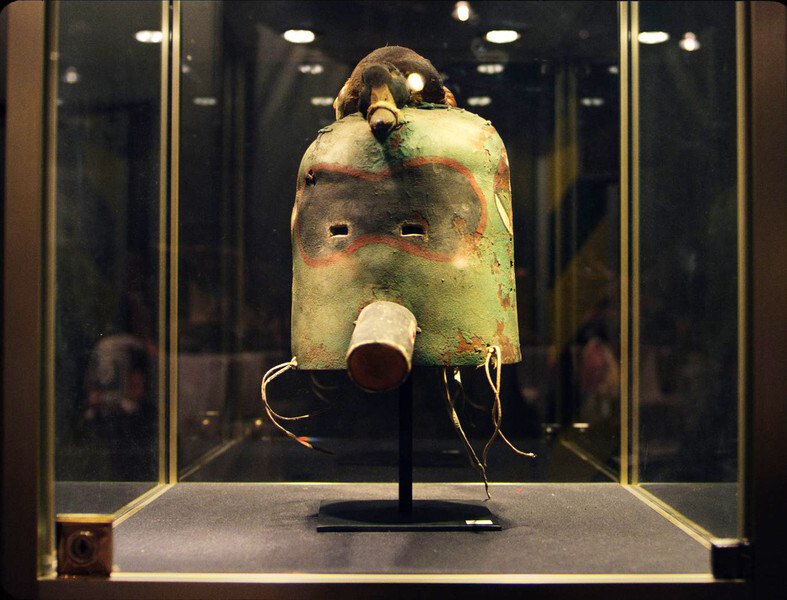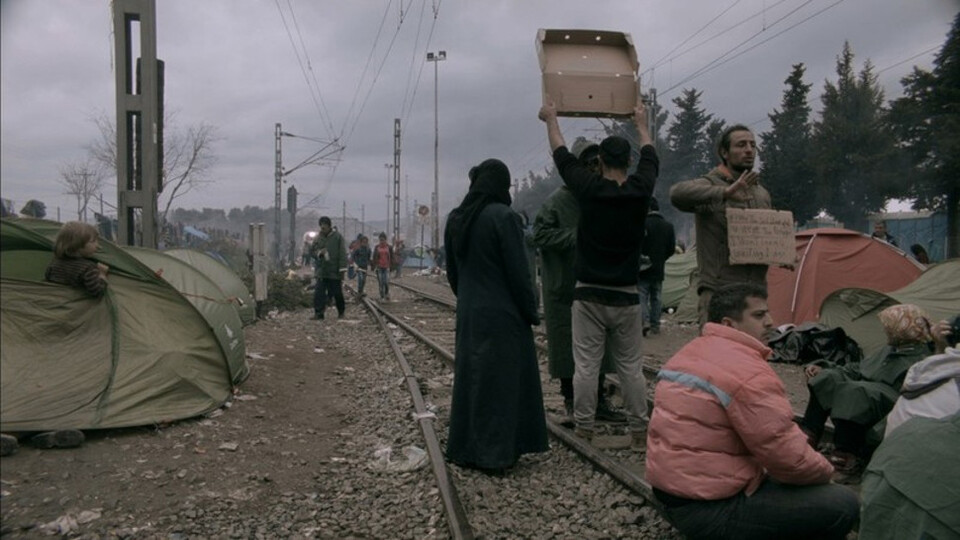Portraits of Thinking
The history of film and television
History(ies) in plural
Of film as well as television
That is your project
For sure there are many reasons
Why it should be so, that you shape this history
Before we get to that, what fascinates me
Is that only someone
From this generation
The generation of the new wave could come up with this
Stories in plural
It is so
There are so many ways
To tell many stories
The new wave is perhaps the only generation
Who started creating film
In the fifties, in the sixties
Who found themselves mid-century
And perhaps also in cinematography1)
For the past few decades, the relationship between film and philosophy has become the subject of academic debate, crossing many geographical borders and borders of different fields of expertise. The main issue seems to be whether a new special discipline or field of knowledge is being inaugurated at the intersection of cinema and philosophy. The localization of such an intersection as well as its size, character and functions are the subjects of many studies, which instead of turning to actual philosophy or cinematography, are turning to texts that have already dealt with answering this question. In the end, they are directed back to their own discussion circle.2)
We cannot shake off the feeling that the basic concepts remain outside the more or less randomly outlined confines of this debate: the participants consider them to be obvious, even though, it is in their non-obviousness where the key to beginning a truly interesting discussion about the divide between film and philosophy lies. A key idea in this sense - the concept / problem - is philosophy itself, or should we rather say philosophies- in the plural sense. Similarly, the diversity of cinematography is also often supressed.
It is impossible to reduce philosophy to an academic discipline or a severely defined set of questions and topics: one can philosophize anywhere - not only at universities - and on any topic - for example, beginning with the question of what exactly philosophy is. According to Wilfrid Sellars, philosophy comes close to being "reflective insight into the intellectual landscape as a whole." According to Gilles Deleuze identifying philosophy as "the art of reflection" is damaging to philosophy. However, Sellars and Deleuze consider the question, asking what is philosophy, to be dynamic and profound – worthy of the philosophers interest.3) Perhaps, that is what characterizes philosophy better than any of their own attempts to answer: philosophy, as an art of problematizing, asks questions in a way that gradually deepens them, condenses them into terms, as Deleuze could say and thickens relationships while respecting the whole, as Sellars might say.
In the mentioned debate concerning the relationship between philosophy and film, a recycling of already introduced examples of film, usually from mainstream production, often occurs. It is as if the field of cinematography did not change each day and it was not worthwhile to explore areas and levels that are on the periphery in terms of distribution. There are many stories of philosophy as well as of film – also many examples of their mutual blending, weaving and bending. Even this has its history and its evolution. The program of this year's Jihlava IDFF provides us with the opportunity of telling some stories of the encounters between philosophy and film.
Philosophizing Films
"At the beginning of his essay, The Thing (1950), Martin Heidegger refers to cinema with obvious displeasure. He accuses it of removing distance and in consequence (seemingly paradoxically) annihilating any sort of closeness. "Everything is blended into a seamless dull lack of any reserve. Is not this shrinkage, which leaves no distance, even scarier than if everything were to shatter to pieces?"4) Our technologically developed, fast paced and monotonous era ruled by the language of science forgets things- "the essence of things remains hidden, forgotten. The substance of things never surfaces, it is never talked of. “5)
Heidegger’s, The Thing, can be read as a performative answer to the question of how to start discussing the substance of things. The poetic nature of the late Heidegger’s work is not a sign of literary finesse, but an effort to separate oneself from the language of science and the technological way of thinking, which corrupts man's relationship with the world. It removes any familiarity and in the place of "things as things" it appoints "the limitlessness of all things taken for granted. “6). It creates a world where we are not at home in the true sense of the word.

The Ister (David Barison, Daniel Ross, 2004)
Poetry, thus, becomes a necessary aspect of the philosophical language for Heidegger, a way of naming – discussing - what is impossible to express with the use of a language saturated by science, or if we were to paraphrase another philosopher, which will be further mentioned in the text - how not to keep silent about what we cannot speak of. Philosophy - for Heidegger and many others - is lined with art. Despite, Heidegger’s scepticism towards cinematography, we see no reason to reject the role which poetry played for Heidegger and the idea that this can be replaced by film.
We mentioned that Heidegger opens his essay, The Thing, with a sigh over how cinematography robs the world of the concept of distance and closeness and it contributes to the fact that everything is "all blended into a dull lack of any distance." In contrast to this statement, the film, Things (2015), by Thomas A. Østbye shows how faithful cinema can be to the Heidegger projection. Østbye reveals the “thingness” of things in a range between closeness and distance even more convincingly and more literally (even without the use of words) than it ever could be done using Heidegger's own somewhat strange and difficult, cumbersome method of poetic expression ("Things, each thinging from time to time in its own way, are heron and roe, deer, horse and bull. Things, each thinging and each staying in its own way, are mirror and clasp, book and picture, crown and cross."7). Lightly vibrating, almost completely static shots of animate and inanimate things in the broadest sense of the word – cup, tree, baby, rain, sculpture and others –each take turns, that last a couple minutes, on the screen. The combination of almost perfect stillness with a slight shake of a hand-held camera, allows one to see things represented at a sort of paradoxical proximity. Speaking again using a citation from Heidegger, they emerge "from a gentle vortex of a mirror game played by the world."8).
Daniel Ross and David Barison also contribute to the dialog with late Heidegger by harnessing the power of film language expression. Their earlier piece, Ister (2004), will be featured at the Jihlava IDFF this year.9) As we have seen, Heidegger attempts to critically capture the modern era, to understand the causes of why man – as he assumes – has forgotten about existence. Is Heidegger's era the same as ours? What is the limit - and timeless - to Heidegger's thinking? The filmmakers are undertaking a journey upstream the Danube, recording fragments of things, reflections of events, words, stories, and they collect what the river, in a sense real as well as mythical, washes up. These relics, are gathered and again taken "from a gentle vortex of a mirror game played by the world” and intertwined with a Heideggerian styled reflection of three French philosophers (Philippe Lacoue-Labarthe, Jean-Luc Nancyho and Bernard Stiegler). The result is a remarkable essay on the permeation of the world and thinking.
Many avant-garde films, which are featured this year at the Jihlava IDFF, also contain a philosophical plane. And it is not just those whose subject is philosophy, such as Simulacra (Theo Tagholm, 2015) – a hypnotic adaptation of Jean Baudrillard’s concept, but also the modest intimate shots, such as the melancholic phenomenology of mortality, Echoes (Jaimz Asmundson, 2015), reflecting on personal memories through noticeable footprints, which people and things leave behind. Or the space-time illusion of the group Flatform10), whose films are regularly featured at Jihlava IDFF (currently their piece Quantum is in this year’s program). In their work, Flatform explicitly thematise different temporalities, and their approach to film timing is a prime example of a dialect of duration, polemicizing with Fernand Braudel and his conception of three temporalities.11)
The most important and from our point of view truly enlightening example of philosophical cinematography is the little-known work of French filmmaker Raymonde Carasco (1939-2009), to which the Jihlava IDFF has devoted a special section curated by David Čeněk and the leading French theoretician of avant-garde cinema Nicole Brenez. Carasco, referred to her films as "writing using sight" and considered them an integral part of her philosophical work. A former student of Roland Barth, and a professor of philosophy and film studies, she spent nearly her whole lifetime filming the Tarahumara Indians; films - ethnographic essays, which were created during her repeated visits to Mexico. She considered them to be her own way of confronting Artaud’s point of view (texts of Antonin Artaud can often be heard in her films). In her own words, Carasco was creating a "physical landscape" (un Paysage-matière), which contains "sensitive events" that the language of science, ethnography, fails to capture. According to Brenez, Carasco was capable of "inventing a descriptive form of true events, examples of encounters with the world."
Self-reflective Films
From time to time, the type of cinema that sets a mirror up to itself is referred to as philosophical – it has means of representation, transforming the world through the audio-visual industry as well as creating worlds or its own experience, foundations and behaviours. A prime example of such films are film essays - peculiar cinematic experiences, whose various forms are explored and classified, for example by Timothy Corrigan.12) Such films are open to philosophical interpretation by nature and philosophize directly within themselves.
For example, the entire work of Harun Farocki13) is saturated with dialectical questioning regarding imaging processes. The key film, As You See (1986), analyses sight and perception in relation to occurrences and representation. Similarly Paul Virilio,reminds us that to produce a clean film – just like in the case of making explosives – nitrocellulose is used. Farocki observes industrial ties between war and everyday life (he does so in, for example, Inextinguishable Fire, 1969)14). Farocki develops his own theoretical concepts in his films, such as setting up a soft montage in opposition to strict linearity and examining the confrontation and meaning of consecutive or superimposed images (placed next to each other).
Another important example is the lawyer and filmmaker Alexander Kluge15), who implemented extensive cultural blocks in the broadcast of German commercial television and created a space for deep (self) reflection of this media, "with a daring invasion of intellect into structures that have been trying to systematically level any sort of intellect for a long time. This invasion was endured by the heads of these stations with extreme displeasure because they are committed to doing so due to the Media Law."16) His film, Miscellaneous News (1986), critically analyses the transformation of the German media scene and the advent of private television. In his private cinema, Kluge mainly takes the standpoint of radical realism, and by detecting the unseen he unnoticeably breaks the "classic power system of organized vision."

Simulacra (Theo Tagholm, 2015)
Also, this year's Jihlava IDFF features several titles that can be perceived as a continuation of this process of reflective cinematographic practices and institutions. The film, I am a Spy (Sarah Wood, 2014), reverses the theme of monitoring into an issue that has something to do with the method of imaging. Emphasizing a bird’s eye view rather than the usually preferred angles (literally - spy planes, observing from a spot with a good view, and also metaphorically in an information sense) and intertwining it with stories of spies, she questions the objectification of the world. She asks whether a view from the bird's eye highlights the structures and relationships observed, or reduces man to an information source, with whom one communicates solely for the purpose of obtaining information. Sarah Wood’s film is a direct Virilion view of the world, focusing on "logistics of perception", the arrangement of elements and apparatuses that facilitate ways of seeing (observing, monitoring) better, and in greater detail than earlier.
A stylistically different contribution to the topic of film and war, is the interestingly-named piece, Machine Gun or Typewriter? (2015), by Travis Wilkerson. In it, the author reflects on how to change the world with ideas, images and poetry instead of violence. "Nobody favours a machine gun to a typewriter, apart from the weapon manufacturers, those who profit from war, and the media." He confronts parallels between the war and film thinking, using found footage of metaphorically linked images in accordance with the Virilion concept of telepresence and the possibility of remote controlling, along with repeating and slowing shots, all the while nodding towards Gaston Bachelard, who said that every picture is destined to magnify (or bring closer).
Philosophy on Screen
The Jihlava IDFF has devoted a special section for the merging of film and philosophy- which includes Portraits of Thinking - films that explicitly embody specific concepts or philosophical worldviews of philosophers using film language. Several of these have already been featured at the Jihlava IDFF in the past: for example, an essay Facs of Life (2009) by director Silvia Maglioni and Graeme Thomson17), who used videos from seminars by Gilles Deleuze and speaking to some of the participants, to build a conceptual cinematic space for Deleuze’s thinking about the fluidity of memory and fleeting footsteps, the shift between revolution and institutional order, and between producing machines and metaphors. The piece, Derrida (2001), by directors Kirby Dick and Amy Ziering Kofman, deals with Derrida attempting to deconstruct deconstruction itself.
The section bearing the subtitle Portraits of Thinking, avoids mechanical crossings of film and philosophy. For example, schematic portraits of philosophers or explicative instructional slides and series explaining particular periods or terms, as often seen on television, are excluded. These descriptive formats, functioning similarly to radio shows, although sometimes featuring talking heads, for example, have the subject of discussion preparing a meal, may have the interpretative value of the spoken word, but do not express themselves using cinematic language. Of course, work that exceeds the scope of normal television programs in terms of literary grandeur can be found in this category.
Philosophy is the subject of online courses, available on the internet in the form of video series or lectures. Philosophical musings are the subject of interest. Some of these pieces are available for viewing in the Laboratory, where one screen is devoted to these smart talking heads.
Among this year’s presented Portraits of Thinking, we can find films of four very different authors, who have their specific means of portraying their encounters with philosophy. Péter Forgács, master of found footage films from family archives, whose work exists in strict metaphorical linking of references contained in the footsteps of private history, exercised his method for his personal interpretation of Wittgenstein’s Tractatus. He implements core ideas into a collage surpassing solely family discourse and deals with historical shifts, in which he thematises naming ephemeral motifs associated with history and the articulation of certain layers of memory. Jan Gogola Jr, was originally supposed to make a film about Czech avant-garde photographers, but transformed it into an analysis about the way representations of the visible world attempts to emphasize abstract qualities, which also animate the abstraction process reflecting social environments. Gogol approaches this aspect of visual reasoning using a dynamic dialogue with image philosopher Miroslav Petříček, whom he installed in the conflicting environment of the encounter between the apparatus and subjects- Petříček is doing real photography work, but he reacts to Gogol’s ingenious whims with a characteristic analytical value and his usual brilliance. Film philosopher, Guy Debord, converts his arguments on the secularity of the appearance of the current world into a sequence of images. And the great film mastermind, Chris Marker, created a thirteen episode long television series, The Owl’s Legacy, in which he uses essayistic methods of installing motives into the context of their representation. He discusses the transformation and actualization of ancient Greek philosophy into the world of today’s experience and realities.
As noted by one of the parties mentioned in the introduction of the academic discussion about the potentials of encounters between film and the philosophy, Thomas Wartenberg, the entire matter would benefit, if it were discussed using examples of specific works. The nineteenth edition of the Jihlava IDFF provides rich material for facilitating such a practice, material we have only mentioned in part. It is not only specific films which are searching for different paths to philosophy, but also others involved with them. Together with those who are watching the movies and thinking about them, there are those who then tell the stories of film and philosophies – stories in the plural sense of the word.
Poznámky
1) Godard, Jean-Luc: Příběh(y) filmu, Camera obscura, Příbram 2006 page no. 83. (Loose English translation)
2) A good study is written by Wartenberg, Thomas: O možnosti kinematografické filozofie, dok.revue 3, 15 (as adapted from http://www.dokrevue.cz/clanky/o-moznosti-kinematograficke-filozofie on 18.10.2015).
3) We are comparing the book by Gill Deleuze and Felix Guattari, Co je filosofie? (OIKOYMENH , Praha 2001 ) first published in 1991 and the study of Wilfrida Sellarse, Philosophy and the Scientific Image of Man (IN: Frontiers of Science and Philosophy, Robert Colodny (ed.), University of Pittsburg) from the year 1962; both are devoted to the question: what is philosophy?
4) Heidegger, Martin: Básnicky bydlí člověk, OIKOYMENH, Praha 1993, page no. 7.
5) The above mentioned, page no. 15.
6) The above mentioned, page no. 35.
7) The above mentioned.
8) The above mentioned.
9) The authors completed the film shortly after graduating in philosophy.
10) Members of Flatform are attending Jihlava IDFF this year and will present their unique method in a masterclass.
11) Short time (traditional time, eventful time measuring “ history", experienced by an individual, bears testimony, but is an illusion, it is fleeting and changeable), long duration (almost motionless time which passes slowly, it is the bringer of historical "major undercurrents", it explores the relationship of man and his environment, shows structures and models), and then between these two is so-called conjecture time (social time, typically cyclical and related to social units) -according to the commentary of Jean Leduc in the book Historici a čas (Kalligram, Bratislava 2005).
12) Reffer to Corrigan, Timothy: Refraktivní kinematografie. Filmové dotazování filmu, dok.revue 5, 14 (as adapted from http://www.dokrevue.cz/clanky/refraktivni-kinematografie-filmove-dotazovani-filmu on 20. 10. 2015).
13) Jihlava IDFF featured his retrospective in the year 2007.
14) Virilio also commented: „Is not the motto of the artillery also the motto of the projector: What is light, is discovered?“ Virilio, Paul: Válka a film, Pavel Mervart, Praha 2007, page no. 35.
15) Jihlava IDFF featured his retrospective in the year 2004.
16) Klepikov, Milan: Alexander Kluge, DO 2, MFDF Jihlava, 2004, page no. 163.
17) In this year’s program of the Jihlava IDFF you can find the film Disappear One (2015).



